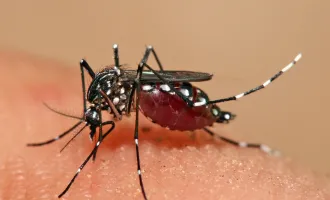STARTUP UCSF: Trinity Health
An online care collaboration tool for multidisciplinary teams
Prior to starting my first year of medical school, I understood that UCSF excels in basic science, clinical, and translational research, the traditionally critical components of a leading academic institution. It wasn’t until I attended a mixer hosted by the UCSF Health Tech Interest Group that I learned about UCSF’s advances in telemedicine and health care information technology (Health IT).
At one meeting, I learned from Dr. Aenor Sawyer about Trinity Health, a secure web-based platform for clinical collaboration that she and Dr. Pierre Theodore have developed at UCSF. Dr. Theodore, an associate clinical professor, and a cardiothoracic and lung transplant surgeon, and Dr. Sawyer, an orthopedic surgeon and director of the Skeletal Health Service, both saw the tremendous benefits of team-based care but repeatedly encountered hurdles to providing it in the current health care system. I had an opportunity to sit down with Dr. Sawyer and learn more about Trinity Health.
How did the collaboration between you and Dr. Theodore begin?
Sawyer: Dr. Theodore and I were participating in a UCSF discussion group focused on mobile health technology. We quickly identified our common interests in improving care through collaboration, striving for the “triple aims” (increasing population health, enhancing patient experience and decreasing costs), and utilizing digital technology where beneficial.
He had been doing some work on how to improve Tumor Board communication, so we joined efforts to build Trinity Health into a care collaboration tool for multidisciplinary teams or for any patient that would benefit from multi-provider input.
What are the drawbacks of the current method of managing complicated patient cases?
Sawyer: Team-based care is of proven benefit for a variety of chronic and complex disease states, but it is expensive and time-consuming, so usually not provided. However, in one specialty, it still persists, and that is as Tumor Board in Cancer Centers. In a typical tumor board meeting, 20 professionals from different disciplines leave their clinical duties to sit in a room and review an average of four cases in an hour.
The important clinical, radiologic, laboratory and pathology data are presented, followed by a discussion amongst the team members. Although the in-person communication and dynamics are valuable, not all team members can make it to the meeting. Unfortunately, the coalesced pertinent data unfortunately fragments when the meeting ends. Also, the important input, reasoning and decisions which happen during the Tumor Board meeting are not recorded, and more or less disappear once the hour is over.
What advantages does Trinity Health provide?
Sawyer: It is a physician-derived tool, purposely designed to facilitate and ease the provider’s workflow, not add to it. We have designed it to be simple to use, accessible from anywhere, anytime and yet secure.
Trinity Health is a web-based platform, so it allows members of a patient’s multi-disciplinary team to interact simultaneously or at different times (synchronously or asynchronously). The patient’s health records, imaging studies and all discussions between involved health care professionals are stored and accessible on Trinity Health’s HIPAA-compliant secure platform.
The team members can thus contribute around their schedule and yet still access the pertinent data and the threaded conversation, which makes for rapid decision-making and minimizes delays in diagnosis and treatment.
What results are you really excited about?
Sawyer: Usually, in-person Tumor Board meetings take two to three weeks to schedule, a week to build the case and up to two weeks for treatment plans to formulate. In a preliminary pilot with Trinity Health, multidisciplinary teams involving doctors across several divisions have come up with solutions within 48 hours.
Based on our use of Trinity Health to date, we can offer the benefits of multidisciplinary decision- making to more patients at lower cost. In addition, we have already demonstrated the ability to gain input from specialists outside of UCSF — and even the country — on complex cases. Dr. Theodore has also used Trinity Health to support case discussions on patients he cares for in Haiti.
What are your guiding principles as you bring Trinity Health to the forefront of Health IT?
Sawyer: We are striving, like all providers in health care, to deliver better care at lower cost. What we don’t want to do is reproduce the EMR! We want to have a simple collaboration tool, interfaced with the EMR, that facilitates rapid, accurate decision-making. We believe Trinity Health’s ability to provide “barrier-free” collaboration will contribute to improved care of individuals and populations right now. Looking to the future, this collaborative technology will play a critical role as the new care models of Accountable Care Organizations evolve.
Do you and Dr. Theodore have plans to upscale Trinity Health and with that, generate revenue?
Sawyer: Yes, in order for Trinity Health to continue providing doctors and health care professionals a convenient way to work with one another and giving patients the advantages of multi-disciplinary team collaboration, our platform seeks to be self-sustainable.
We plan to continue developing and implementing Trinity Health at UCSF, but to also build it into a commercializable product which will serve many more patients inside and outside of UCSF. There will always be a model for the under-served, be they U.S. citizens or in international communities.
How can we get involved with Trinity Health?
Sawyer: We are always looking for interested medical students to participate. We are starting a new pilot soon and are doing ongoing UI (user interface) testing. It is an opportunity to start your journey towards becoming a “clinician innovator,” which will be critically needed in this new health care era.
Contact Dr. Sawyer at Aenor.sawyer@ucsf.edu for more information about Trinity Health or other Digital Health initiatives and innovation opportunities at UCSF.


